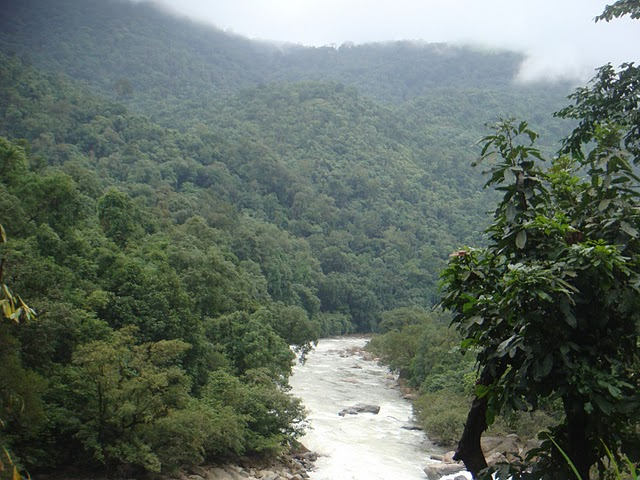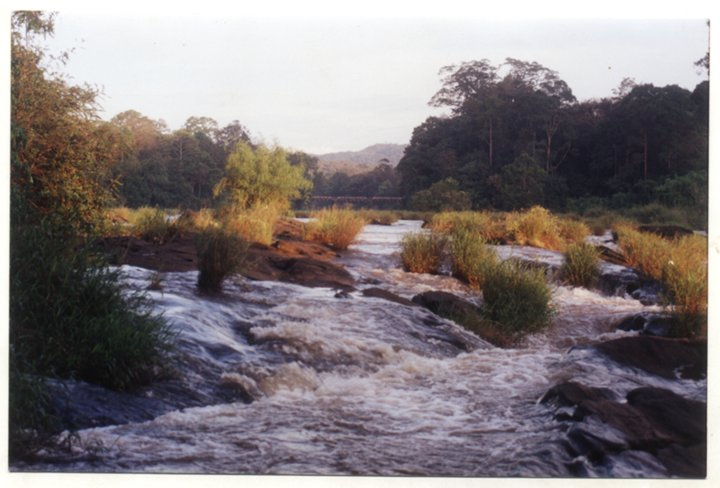 Dr. Bharat Jhunjhunwala, past faculty at IIM, Bangalore, holds a doctorate in Economics. He has been working persistently on economic impacts of hydropower dams, applying the concepts of environmental economics to arrive at some interesting results.
Dr. Bharat Jhunjhunwala, past faculty at IIM, Bangalore, holds a doctorate in Economics. He has been working persistently on economic impacts of hydropower dams, applying the concepts of environmental economics to arrive at some interesting results.
His latest book, ‘Economics of River Flows: Lessons from Dam Removals from America’ analyses dam decommissioning examples from the United States and raises some pertinent questions about costs benefit analysis of dams in India. His earlier book, ‘Economics of Hydropower’ raised questions about economic efficiency, viability and sustainability of Hydropower Dams in India.
Parineeta Dandekar, IWP, talks with him on some of these issues.
Dr. Bharat Jhunjhunwala can be contacted at: bharatjj@gmail.com
1. In your recent book, Economics of River Flows, you raise some pertinent questions about the EIA and cost benefit analysis of hydropower dams in India. Could you please share your views with us?
The basic point learnt by me from the study of dam removals is that we are not doing true and correct Cost-Benefit Analysis of hydropower dams. The benefits from generation of electricity are grossly overstated while the costs of generation are understated. Most hydro projects will be proven to be unviable once these corrections are made. Presently there is a huge lobby of Power Ministry, Contractors and rich consumers that is ensuring that such true CBA is not done. These lobbies stand to gain even though the country stands to loose. These groups are pushing the country into an abyss by pushing unviable projects for their gain.

Parbati stage II Project in Himachal Pradesh Photo: with thanks from Kalpavriksha
Table 1. From Dr. Jhunjhunwala’s Book, Economics of Hydropower, 2009
Chapter No | Item | Total | Employees of NHPC and Government of Uttarakhand | People of India |
1 | Benefits from generation of power | (+) 103.8 | - | (+) 103.8 |
2 | 12% Free power to State | (+) 50.2 | (+) 24.1 | (+) 26.1 |
3 | Employment | (+) 1.5 | - | (+) 1.5 |
4 | Costs | (-) 931.8 | - | (-) 931.8 |
| Total | (-) 776.3 | (+) 24.1 | (-) 800.4 |
5 | Memo: Benefits to employees of NHPC in generation of electricity | - | (+) 121.6 | - |
2. Do you think that the current EIA procedures represent the true value of rivers? In your view, what are the crucial use and non use values which need to be included in our EIAs and what are the perils of neglecting these?
The aesthetic, spiritual and cultural value of free flow is the major omission in value of our rivers. People feel happy seeing and taking a bath in the free flowing river. This benefit is intangible but economists have developed the methodology of ‘willingness to pay’ to assess its value. People can be asked how much they are willing to pay for maintaining or restoring the free flow of a river. This value can be treated as an implied ‘cost’ of making a dam. The Elhwa Dam in Washington, USA is being removed because the State Government commissioned such study and found that people of the state will secure greater benefits by allowing the river to flow than from generation of electricity. This is very important for us in India where we have a culture of worshipping our rivers.
The purpose of making dam is, ultimately, welfare of the people. Welfare is a holistic concept. Income and consumption is desirable only because it provides satisfaction and happiness. So, making of dams has two opposite effects. It directly hits at welfare by depriving some people of their livelihoods and some people of the satisfaction of seeing the free flow of rivers and the cultural and spiritual well being. On the other hand it provides more satisfaction from consumption of electricity. The net result could be either way. Therefore, a dispassionate assessment of the aesthetic, cultural and spiritual values is necessary.
Table 2: Benefits and costs of Kotlibhel 1B (Rs crore/year)
( From the book: Economics of Hydropower)
Sl No | Item | Benefit Estimated by Author | Costs Estimated by Author | Costs Recognized by Planning Commission | Costs Ignored by Planning Commission |
1 | Benefits from generation of power | 103.8 | - | - | - |
2 | 12% Free power to State | 50.2 | - | - | - |
3 | Employment | 1.5 | - | - | - |
4 | Sediment | - | 99.1 | N | 99.1 |
5 | Quality of water | - | 98.4 | N | 98.4 |
6 | Methane emissions | - | 31.7 | Y | - |
7 | Forests | - | 55.3 | Y | - |
8 | Earthquakes | - | 8.4 | Y | - |
9 | Landslides | - | 23.0 | N | 23.0 |
10 | Malaria and health | - | 21.4 | Y | - |
11 | Biodiversity | - | 11.7 | Y | - |
12 | Otters | - | 20.0 | N | 20.0 |
13 | Road accidents | - | 7.1 | N | 7.1 |
14 | Decline in temperatures | - | 7.0 | N | 7.0 |
15 | Sand | - | 5.8 | N | 5.8 |
16 | River Rafting | - | 8.0 | N | 8.0 |
17 | Bridges | - | 3.3 | N | 3.3 |
18 | Aesthetic value of free-flowing water | - | 65.0 | N | 65.0 |
19 | miscellaneous costs | - | 5.0 | N | 5.0 |
20 | Sub Total: Cost of Kotlibhel 1B HEP | - | 470.2 | - | 341.7 |
21 | Add 50% due to cascade effect | - | 235.1 | N | 170.8 |
|
| 155.5 | 705.3 | - | 512.5 |
Authors note: Admittedly, these estimates are dependent on many assumptions made by the author. The author’s basic objection is that the costs enumerated above are ignored by those who support hydropower.
Second aspect ignored is that of biodiversity. EIAs make a list of endangered species that may be affected. But biodiversity is much more than this. Intra-species variations in genes are not looked at. Secondly, where endangered species are found, cosmetic arrangements are made for helping the endangered species to survive. These mostly do not work.
In ignoring these values is that we are actually harming welfare of the people and endangering survival of this living world.
3. You have expounded upon USA’s experience with Dam Decommissioning. What are the important lessons to be learned from USA’s experience?
It is very difficult to get the policy makers to listen to true CBA. New dams continue to be made in the USA. Few activists like American Rivers are waging a lone war by intervening in various statutory approvals and court cases. It is an uphill task because the lobbyists of contractors and rich consumers are much too strong. But progress is being made and I hope we shall see decommissioning of bigger dams in coming times.
Important lesson for the developing countries is to undertake true CBA right away. They will be squandering huge resources in making the dams which they may pay to remove later.
4. The last remaining free flowing rivers in India are succumbing to developmental pressures. What, in your view, is the importance of these rivers? You have said that with more and more dams being built, the ‘scarcity’ value of free flowing rivers is increasing exponentially.
Importance of these rivers is also for aesthetic and biodiversity purposes. But I do not share the sense of ‘succumbing’ to development pressures. I have no quibble with development. My point is that it should be long term development for the masses and not short term development for the contractors. I think this is an open country and we activists have failed to make this point to the larger public. I hope we shall succeed in this. We need to raise the question whether dams are for development at all?

Free flowing stretch of a river Tunga in Western Ghats Photo: Harish Banugondi
5. Could you share your experiences of interacting with the pilgrims at Haridwar and calculating the WTP for decommissioning and freshwater flows?
My effort was to assess the loss of welfare incurred by people due to lowering of water quality due to making of dams. This includes cultural, biotic, DO level and other factors. My experience is that policy makers have no answer to this argument. Officers of MOEF repeatedly said to me, “If we include these values then no dam will be built.” So there is an implicit policy decision by the Government to black out this issue.
First we asked the pilgrims how much they value taking bath in the Ganga in money terms. Many refused to give a number. Others said its was ‘invaluable’ or ‘priceless’. But nearly one-half put a money value on the bath.

Worshipping River Ganga at Haridwar. Photo: with thanks from http://www.pbase.com/clodreno/image/
6. What, in your opinion, are the important steps to be taken to ensure environmental flows or freshwater flows in rivers?
I am totally opposed to the concept of ‘environmental’ flows. This means that dams may be built and migration of fishes and flow of sediments can be arrested. Then some specified quantity of water may be released from the dam or barrage. Such release does not restore movement of aquatic life and sediment. I am opposed to obstructing the flow of river. I think that a partial obstruction may be made to remove, say, 25% of the flow for power generation as done in a gharat. (Part of the water in a stream is diverted for running a flour mill by placing a stone half way in the stream. The other half continues to flow freely and the ecological functions of fish migration and sediment flows are not obstructed). Likewise, remaining water should flow freely and perform its basic ecological functions. For rivers like Ganga and Narmada which are unique cultural importance, different criteria need to be in place.

Chalakudy River where the Athirappilly Hydel Project is planned in Kerala Photo: Latha Anantha
7. But In rivers like Krishna where nearly all the runoff is used by various competing users (consumptive use), how do we ensure freshwater flows in rivers?
The way is to assess the true economic value of the consumptive uses. For example, water-guzzling crops like sugar cane are grown with river waters. The economic value of production made from such use of river water is small. The benefit from consumptive use should be weighed against the loss from free flow of river waters—fisheries, coastal erosion, aesthetic value, etc. Then we may arrive at an optimum level that can be profitably diverted. The benefit from each additional percentage of water removed will decline as we increase the level of removal. On the other hand the cost of each additional percentage of water removed will increase. At some point the two will become equal. This is the optimum level of water removal.
This approach assumes that there are no absolute values such a spiritual or biodiversity involved. This economic calculation is not relevant where such absolute values are involved.
8. In the end, what are the ways in which true value of natural resources can be included in the current economic discourse? Do you see this happening in coming years?
One of the ways is to put monetary value on the natural resources. There is a huge and growing literature on this valuation and accounting. Then this can be included in the policy making process. Whether this is done or not will depend on how much pressure the activists can build and mould the public opinion.
/articles/we-are-not-doing-true-cost-benefit-analysis-hydropower-dams-india-interview-dr-bharat